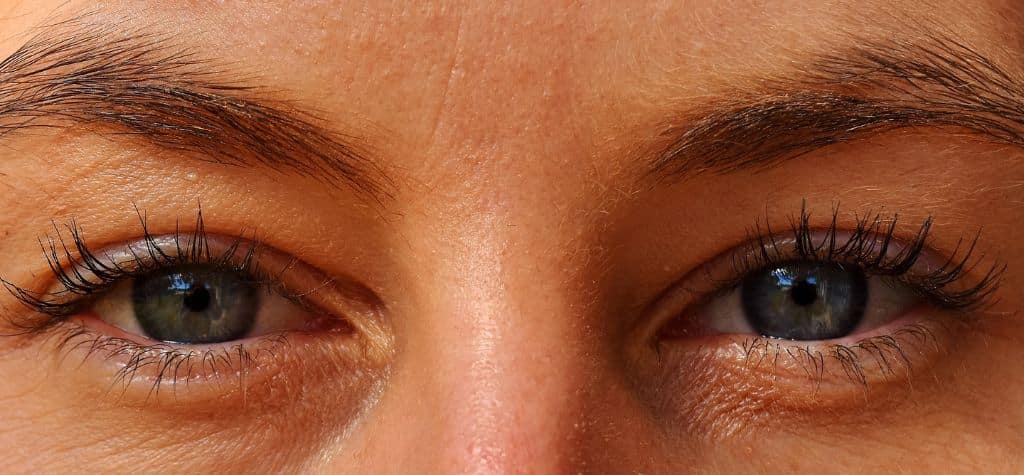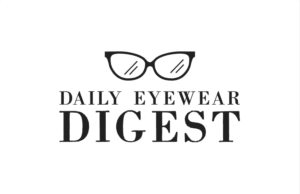The Rising Concern of Air Pollution in 2025

As of 2025, air pollution levels have reached critical thresholds in many urban areas across the globe. While respiratory issues typically dominate public health discussions, another vital aspect often gets overlooked—our eyesight. The quality of the air we breathe plays a silent but impactful role in the health of our eyes.
Key Pollutants in Today’s Atmosphere
Modern air pollution is a complex mix of harmful substances. These include particulate matter (PM2.5 and PM10), nitrogen dioxide (NO₂), ozone (O₃), and volatile organic compounds (VOCs). Each of these pollutants can irritate, inflame, or even damage the delicate structures of the eye.
Urban vs Rural Air Quality
City dwellers are especially vulnerable. Dense traffic, industrial emissions, and low green cover result in poor air quality. Rural areas, while often better off, still face seasonal pollution from agricultural activities, forest fires, and dust storms—posing risks to vision health in different ways.
The Science Behind Vision and Air Quality
Our eyes are directly exposed to the environment, with minimal protective barriers. When pollutants come into contact with the cornea, conjunctiva, or tear film, they can cause immediate irritation and longer-term damage.
How the Eye Reacts to Pollutants
Pollutants activate immune responses and oxidative stress on the eye surface. Over time, this exposure leads to inflammation, discomfort, and degradation of the eye’s natural defense systems.
The Role of the Cornea and Tear Film
The tear film is a thin protective layer that maintains moisture and flushes out irritants. Airborne particles can destabilize this layer, resulting in dry eyes, blurred vision, and increased sensitivity.
Common Eye Conditions Linked to Poor Air Quality

Chronic exposure to polluted air doesn’t just cause temporary irritation—it can lead to persistent eye disorders.
Dry Eye Syndrome
This condition is one of the most prevalent effects of air pollution. Eyes become dry, itchy, and sore due to disrupted tear production and tear film instability caused by airborne contaminants.
Conjunctivitis and Eye Irritation
Polluted air often contains allergens and bacteria that can inflame the conjunctiva, the thin membrane covering the eye. This results in conjunctivitis—marked by redness, swelling, and discharge.
Allergic Reactions and Itching
Airborne irritants like pollen, dust, and VOCs can trigger eye allergies. Symptoms include intense itching, watery eyes, and puffiness, often mistaken for seasonal allergies or screen fatigue.
Particulate Matter (PM2.5) and Your Eyes
What is PM2.5?
PM2.5 refers to fine inhalable particles with diameters that are generally 2.5 micrometers or smaller. These particles originate from car exhaust, industrial processes, wildfires, and even household combustion. Due to their small size, they can easily enter the eye and lodge themselves in the tear film or ocular surface.
How Fine Particles Infiltrate the Eye
Because PM2.5 is so small, it bypasses the usual defense mechanisms of the eye. These particles cause inflammation and disrupt tear production, making the eyes more vulnerable to damage. Research indicates that long-term exposure can increase the risk of corneal abrasions, eye fatigue, and even worsen existing eye conditions like glaucoma.
Ozone Pollution and UV Exposure Synergy
Ozone’s Role in Ocular Surface Stress
Ozone, a reactive gas formed when sunlight interacts with air pollutants, is a major irritant. When inhaled or exposed to the eyes, it damages the lipid layer of the tear film, causing rapid tear evaporation and irritation.
UV Rays and Airborne Chemical Reactions
Ozone pollution also increases sensitivity to ultraviolet (UV) radiation, compounding damage to the cornea and lens. Combined exposure to UV and ozone can accelerate the aging process of eye tissues, increasing the risk of cataracts and macular degeneration.
Long-Term Impact of Air Quality on Vision
Accelerated Aging of the Eye
Continual exposure to pollutants like PM2.5 and ozone causes oxidative stress, which breaks down proteins in the eye. This process mimics natural aging but at a much faster rate, leading to earlier onset of eye disorders like presbyopia and retinal thinning.
Risk of Developing Cataracts
Several studies have linked air pollution to a higher incidence of cataracts, especially in high-exposure areas. Pollutants increase free radicals in the lens of the eye, causing clouding and light sensitivity over time.
Air Quality and Children’s Eye Development

Pediatric Vulnerability
Children’s eyes are still developing, making them more sensitive to air pollutants. Their immune systems are immature, and they blink less frequently, which leads to prolonged exposure to irritants.
School Environments and Exposure
Poor air quality in school zones—due to traffic, construction, or insufficient ventilation—can impact learning and vision health. Prolonged exposure in these formative years can interfere with visual development and increase long-term eye issues.
Digital Screens and Pollution: A Dangerous Combo
Blue Light and Airborne Irritants
Digital devices emit blue light, which by itself strains the eyes. Combine that with exposure to airborne irritants, and you have a double whammy. Dryness, redness, and eye fatigue are common complaints, especially in indoor office environments with poor air filtration.
Compounded Eye Strain
Polluted indoor air adds to the discomfort caused by screen time, increasing the chances of computer vision syndrome. Symptoms include eye twitching, headaches, and blurred vision.
How to Recognize Air Pollution-Related Eye Issues
Redness, Tearing, and Blurred Vision
These are some of the first signs of pollution-related eye strain. They may worsen after outdoor activities, commuting, or time spent in poorly ventilated environments.
Symptoms That Should Not Be Ignored
Persistent symptoms like pain, sensitivity to light, or vision changes should prompt immediate attention. These could signal underlying conditions exacerbated by environmental exposure.
Expert Tips to Protect Your Vision in 2025
Use of Protective Eyewear
Wearing wrap-around sunglasses or clear goggles during high-pollution days can shield the eyes from irritants. Anti-reflective coatings and UV protection also help prevent long-term damage.
Home Air Purifiers and Eye Drops
Invest in a high-quality HEPA air purifier to reduce indoor pollutants. Use preservative-free artificial tears to flush out debris and maintain a healthy tear film.
Nutrition and Eye Health in Polluted Environments

Antioxidants and Omega-3s
A diet rich in vitamin A, lutein, zeaxanthin, and omega-3 fatty acids supports tear production and strengthens the eye’s defense mechanisms. Leafy greens, fatty fish, and colorful fruits are excellent choices.
Hydration and Eye Lubrication
Staying hydrated keeps your eyes moist. Drink at least 8 glasses of water a day and avoid caffeine, which can dry out your eyes further.
The Role of Indoor Air Quality in Eye Health
Common Indoor Irritants
Dust, mold, pet dander, and chemical cleaners all contribute to poor indoor air quality. These substances can irritate your eyes just as much as outdoor pollution.
Ventilation and Humidification
Ensure your home or workspace is well-ventilated. Use a humidifier to maintain optimal moisture levels and reduce the risk of dry eye flare-ups.
How Governments Are Addressing the Issue
WHO and Local Guidelines
The World Health Organization (WHO) has revised its air quality standards to reflect the growing body of evidence linking pollution to eye health. Cities are being urged to adopt green policies and reduce emissions.
Initiatives to Monitor and Improve Air Quality
Apps and public monitors now provide real-time air quality data. Policies are being implemented to reduce vehicle emissions, promote clean energy, and improve urban greenery.
Technological Innovations in Eye Protection
Pollution-Sensitive Contact Lenses
New smart lenses are being developed to change color or texture when pollutant levels are high, offering both protection and early warnings.
Smart Glasses and Air Filters
Wearable tech is integrating micro air purifiers and lenses with anti-smog coatings, providing layered defense for individuals in high-risk zones.
Personal Stories: Real People Affected by Air Quality
Case Studies and Testimonies
- Mei Lin, a student in Beijing, reported that frequent eye infections vanished after her school installed air purifiers.
- Rajeev, an IT professional in Delhi, now uses artificial tears daily and wears blue-light-blocking glasses after developing chronic dry eyes due to city smog.
These stories highlight the real-world impact of polluted air on ordinary lives.
Frequently Asked Questions
Q1: Can air pollution permanently damage my eyesight?
A: Yes, prolonged exposure to polluted air can lead to permanent eye conditions like cataracts and macular degeneration.
Q2: What are the best eye drops for pollution-related irritation?
A: Look for preservative-free artificial tears specifically designed for dry or sensitive eyes.
Q3: How can I check air quality before going outside?
A: Use apps like AirVisual, Plume Labs, or AQICN to monitor real-time air quality in your area.
Q4: Are children more affected by air pollution when it comes to eye health?
A: Absolutely. Children’s eyes are still developing and more sensitive to pollutants, making them more vulnerable.
Q5: Is indoor air safer for my eyes than outdoor air?
A: Not always. Poor ventilation and household irritants can make indoor air equally harmful without proper air purification.
Q6: Should I stop wearing contact lenses on high pollution days?
A: If you notice discomfort, switch to glasses and use lubricating drops. Some lenses are not suitable for polluted environments.
Conclusion: Taking Action for Your Eye Health in 2025
In 2025, protecting your vision means more than just regular eye exams. With worsening air quality, your daily exposure to pollutants could be silently damaging your eyesight. From dry eyes to increased risks of cataracts, the impact is real—but not irreversible.
By staying informed, investing in eye-friendly habits, and using the right protective measures, you can guard your vision against today’s environmental threats. Your eyes are windows to the world—let’s keep them clear, protected, and healthy.

